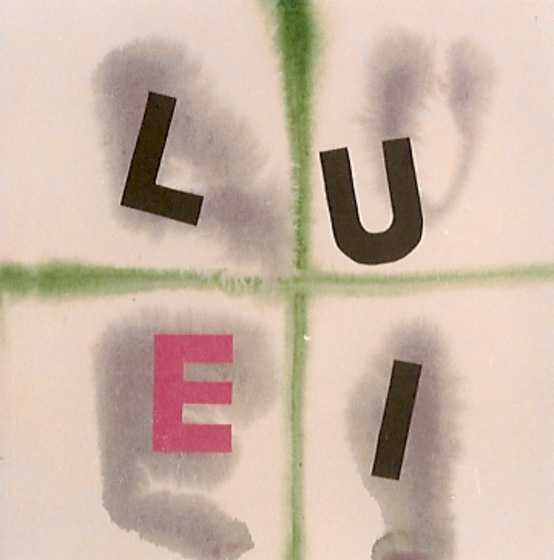LUI-LEI, il maschile e il feminile, l'eterno incontro, scontro, reincontro di due mondi ancestrali. Mariapia Fanna Roncoroni, un'artista delicata, sottile e raffinata, ci fa riflettere sul Lui e Lei.
Scorri la pagina per proseguire l'attività... |
HE-SHE, the masculine and the feminine, the eternal encounter, conflict, reunion of two ancestral worlds. Mariapia Fanna Roncoroni, a delicate, subtle and refined artist, makes us think about He and She.
Scroll down for more of the activity... |
|---|
Nata nel 1925, donna di cultura e d'avanguardia, amante della natura, pronta a cavalcare per le praterie, Mariapia è una donna intelligente e ostinata che, pur nel rispetto degli usi della provincia trevigiana in cui era giunta, dopo aver vissuto a Milano e a Buenos Aires, non accetta, come le si chiede, di rinunciare ad indossare i suoi pantaloni e, piuttosto, ci mette la gonna sopra. Madre avvolgente che apre il cancello del suo parco a tutti i bimbi del paese, Mariapia Fanna Roncoroni è stata un'artista che ci ha parlato in molti modi, tramite il disegno e la pittura, il legno e la pietra, il collage e le installazioni. In particolare si è soffermata sul rapporto LUI-LEI, uomo-donna, universo maschile e universo femminile, in cui LUI è nero e predominante mentre LEI è rosa/magenta, rara ma ben visibile. Nel lavoro di Mariapia, entrambi, Lui e Lei, creano una trama in cui oltre alla tensione dello "scontro" è possibile "fare poesia di ciò che Lui e Lei si dicono".
Nell'universo prevalentemente maschile dei primi del novecento, l'energia, la presenza e il lavoro di Mariapia hanno aiutato a portare consapevolezza sulla situazione e sul ruolo delle donne nella società. In questo nostro secolo, in cui il movimento MeToo ha risollevato il problema dell'incontro-scontro Lui-Lei, il messaggio di Mariapia diviene non solo attuale ma anche ricco di spunti e saggezza.
Di seguito il video Labirinti mostra dei lavori di Mariapia mentre il narratore ci legge alcuni suoi pensieri. |
Born in 1925, an avant-garde woman with a great culture, lover of nature, ready to ride on the prairies, Mariapia is an intelligent and obstinate woman who -while respecting the customs of the Treviso province where she arrived after having lived in Milan and Buenos Aires - does not accept, as she is asked, to give up wearing her trousers and, rather, puts her skirt above them. Embracing mother who opened the gate of her park to all children of the village, Mariapia Fanna Roncoroni was an artist who spoke to us in many ways, through drawing and painting, wood and stone, collage and installations. In particular, she focused on the HE-SHE relationship, man-woman, masculine and feminine universe, in which HE is black and predominant while SHE is pink/magenta, rare but clearly visible. In Mariapia's work, both, He and She, create a pattern in which, in addition to the tension of the "conflict", it is possible "to make poetry of what He and She say to each other".
In the predominantly male universe of the early twentieth century, Mariapia's energy, presence and work helped raise awareness about the situation and role of women in society. In this century of ours, in which the MeToo movement has raised the problem of the He-She encounter-conflict, Mariapia's message becomes not only up-to-date but also full of inputs and wisdom.
The following video, Labyrinths, shows Mariapia's works while the narrator reads some of her thoughts. |
|---|
Labirinti
Mariapia Fanna Roncoroni
This video is additional reference material and is not property of CyberItalian.
Should you have any problem viewing it, please
notify us.
Thank you for your patience and collaboration!
TESTO DEL VIDEO:
LUI, LEI, LUI, LUI, LEI, LUI, LUI, LUI, LEI, LUI, LUI, LUI, LUI, LEI, LUI, LUI, LUI, LUI, LUI, LEI...
LUI LEI, trama concettuale in cui rari LEI magenta rompono l'ordito nero di LUI, facendosi traccia. Tema figurativo. La formula grafica inserita nel modulo quadrato diviene partitura. Messaggio sospeso. Ambiente. Luogo mentale di mutazione. Labirinto.
Si affondi la propria rete sempre di più e si porti delicatamente alla superficie ciò che hanno detto LUI, LEI, e si faccia poesia.
Imprigionata dalla forma, cercavo l'energia concentrata in essa.
Il segno simbolo inciampa nel clown, grottesca metafora esistenzale in cui LUI LEI si incrociano all'insegna dell'ironia.
LUI, LUI, LUI, LEI, LUI, LUI, LUI, LUI, LEI, LUI, LUI, LUI, LUI, LUI, LEI, LUI, LUI, LUI, LUI, LUI, LUI.
Orizzontale e verticale, vibranti di tensioni, marcano il crocevia del labirinto.
L'immagine affiora da un flusso di pensiero in cui la natura agisce da stimolo originario.
Emotivo e razionale sono momenti collegati e paralleli di un'unica ricerca.
Il percorso che dalla realtà porta all'astrazione e alla forma strutturata può improvvisamente mutare e giungere attraverso l'introspezione, la memoria e il sogno ai fogli di mail-art. Frammenti di comunicazione.
Sapere che si sa, quello che si sa. Sapere che non si sa, quello che non si sa. |
VIDEO TRANSCRIPT:
HE, SHE, HE, HE, SHE, HE, HE, HE, SHE, HE, HE, HE, HE, SHE, HE, HE, HE, HE, HE, SHE...
HE SHE, conceptual pattern in which rare magenta SHE break the black thread of HE, becoming a trace. Figurative theme. The graphic formula inserted in the square module becomes the music score. Suspended message. Environment. Mental place of mutation. Labyrinth.
Sink your net deeper and deeper and gently bring to the surface what HE, SHE said, and make a poetry out of it.
Imprisoned by the form, I was looking for the energy concentrated in it.
The symbolic sign stumbles upon the clown, a grotesque existential metaphor in which HE SHE intersect in the name of irony.
HE, HE, HE, SHE, HE, HE, HE, HE, SHE, HE, HE, HE, HE, HE, SHE, HE, HE, HE, HE, HE, HE.
Horizontal and vertical, vibrating with tensions, mark the crossroads of the labyrinth.
The image emerges from a stream of thought in which nature acts as an original stimulus.
Emotional and rational are connected and parallel moments of a single research.
The path that leads from reality to abstraction and to the structured form can suddenly change and reach - through introspection, memory and dreams - mail-art sheets. Fragments of communication.
Knowing that you know, what you know. Knowing that you don't know, what you don't know. |
|---|---|
DARE DEL LEI
Sull'onda delle opere d'arte di Mariapia e della finezza e delicatezza con cui definisce il concetto di LEI, riflettiamo sull'espressione italiana "dare del Lei", cioé sul fatto che per esprimere a qualcuno un'alta considerazione e rispetto in italiano usiamo il pronome femminile Lei.
Nel medioevo era comune l'uso del Voi per rivolgersi a persone con cui non si aveva familiarità e a cui si voleva/doveva portare rispetto.
Dal Dolce Stil Novo alla letteratura italiana del quattrocento e cinquecento, la donna è stata spesso considerata come un angelo o un tramite verso Dio. Le cancellerie rinascimentali usavano il Lei per mostrare un altissimo rispetto nel rivolgersi a qualcuno.
È molto interessante che Manzoni, uno dei più grandi scrittori italiani dell'ottocento, nel suo capolavoro I Promessi Sposi cambi registro dal TU, al VOI al LEI a seconda delle situazioni e a seconda di quale personaggio parli o a chi si rivolga. Il TU esprimeva il massimo dell'informalità, quasi un insulto, il VOI mostrava rispetto, il LEI un altissimo rispetto. I fidanzati si davano del VOI e i figli davano del VOI al genitore (Voi, mamma...).
Attualmente, nell'italiano standard, la forma Lei ha prevalso, non solo per espimere considerazione e rispetto verso qualcuno, ma anche semplicemente per rivolgersi a qualcuno con cui non si ha familiarità. Per esempio, diamo del Lei ad un cameriere, ad un insegnante, ad un passante per strada o al presidente della Repubblica.
O meglio, si DOVREBBE dare del Lei, perché molte persone, spesso giovani, recentemente hanno preso la cattiva abitudine di dare del Tu a chiunque.
Nell'italiano standard usiamo il Tu per rivolgerci ad amici, parenti o persone con cui abbiamo molta familiarità.
Se desideri approfondire l'argomento, clicca qui per la lectio magistralis di Umberto Eco: Tu, Lei, la memoria e l’insulto.
Ora pratica l'uso del Lei con gli esercizi seguenti.
Ricorda che quando il pronome cambia dal "tu" al "Lei" tutto il resto cambia di conseguenza (ad esempio il verbo cambia alla terza persona singolare). Quando Lei è usato per rivolgersi a qualcuno in maniera formale si scrive maiuscolo.
Hai domande tu? (Informale) Ha domande Lei? (Formale, rispettoso)
Buona pratica! |
USING THE FORMAL APPROACH WITH LEI
Following Mariapia's works of art and the refinement and delicacy with which she defines the concept of SHE, we reflect on the Italian expression "dare del Lei", that is a way to express to someone a high consideration and respect, using the feminine pronoun Lei.
In the Middle Ages it was common to use Voi to address people with whom you were not familiar and to whom you wanted/had-to pay respect. The use of Lei spread during the Renaissance - they say due to the Spanish influence, but we at CyberItalian like to think that the concept of the "angelic woman", (a representation of the woman typical of the 13th century Dolce Stil Novo) - has some responsibility in this regard.
From the Dolce Stil Novo to the Italian literature of the fifteenth and sixteenth centuries, women have often been considered as angels or a gateway to God. The Renaissance chancelleries used Lei (She) to show the highest respect in addressing someone.
It is very interesting that Manzoni, one of the greatest Italian writers of the nineteenth century, in his masterpiece I Promessi Sposi (The Betrothed) changes from TU, to VOI to LEI, depending on the situation and on which character was speaking or to whom the character was speaking. TU expressed the maximum of informality, almost an insult, VOI showed respect, LEI a very high respect. Engaged boy and girl used VOI between themselves and children used VOI to speak to a parent (Voi, mother).
Currently, in standard Italian, the form Lei has prevailed, not only to express consideration and respect towards someone, but also simply to address someone with whom we are not familiar. For example, we have to use Lei with a waiter, a teacher, a passerby on the street or the President of the Republic.
Or rather, one SHOULD use Lei, because many people, often young people, recently got into the bad habit of using Tu with anybody.
In standard Italian we use Tu to address friends, relatives or people we are very familiar with.
If you want to learn more about the subject, click here for Umberto Eco lectio magistralis: Tu, Lei, la memoria e l’insulto.
Now practice using Lei with the following exercises.
Remember that when the pronoun changes from "tu" to "Lei" everything else changes accordingly (for example the verb changes to the third person singular). When Lei is used to address someone in a formal way, it is capitalized.
Hai domande tu? (Do you have any questions? Informal) Ha domande Lei? (Do you have any questions? Formal, respectful)
Enjoy your practice! |
| Usa il dizionario online se necessario. | Use the online dictionary if you need. |
|---|
1. Rivedi l'approccio formale.
2. Su un foglio di carta, riscrivi le frasi seguenti cambiandole dall'informale al formale (clicca sul Pinocchio-Risposte in fondo alla pagina per il risultato).
| Glossarietto | |
| dare del Lei | to address someone with a formal approach |
| dare del tu | to address someone with an informal approach |
Esercizio 1
- Tu hai mai visitato Venezia?
- Alberto, tu vuoi un bicchiere d'acqua?
- Tu da piccolo amavi leggere?
- Teresa, puoi telefonare al dottore?
- Tu non devi mangiare troppa pizza.
- Tu sei sempre stata puntuale.
- Invece tu sei sempre stato in ritardo.
- Ti piace andare al cinema?
- Cosa desideri mangiare?
- Ciao, come ti senti oggi?
Esercizio 2
- Tua sorella viene domani?
- Non prendere il caffè altrimenti non dormi.
- I tuoi cugini hanno cambiato numero di telefono? Me lo puoi dare?
- Tu hai dei fratelli molto simpatici. Ti vorrei invitare a cena con loro.
- Non aprire quella scatola.
- Tu quando eri a Milano, soggiornavi all'hotel Duomo?
- Francesco, quando sei andato a Firenze l'ultima volta?
- I tuoi libri sono tutti in inglese, me ne presti uno?
- Hai già incontrato il professore nuovo?
- Tu sei stata dal capoufficio stamattina, ti ha dato l'aumento?









